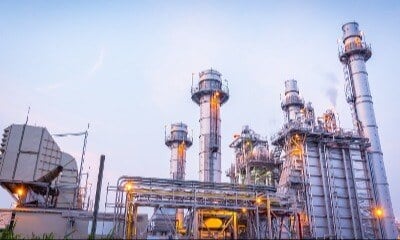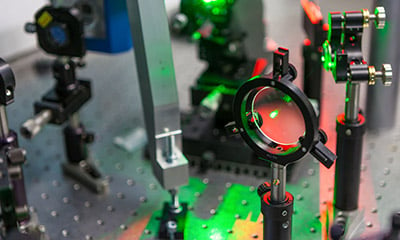Next Generation InP Semiconductor Devices
By Seminex
InP (Indium Phosphide) and GaAs (Gallium Arsenide) are both compound semiconductors used in electronic devices, but InP-based electronic structures offer several advantages over GaAs-based structures, leading to significant performance and reliability improvements.
Higher Electron Mobility
InP typically exhibits higher electron mobility compared to GaAs. Electron mobility is a measure of how quickly electrons can move through a material in response to an electric field. Higher electron mobility allows for faster electron transport, resulting in better overall device performance.
Direct Bandgap Material
InP is a direct bandgap material, meaning that the energy difference between its valence band and conduction band is minimal. This property is advantageous for optoelectronic applications such as lasers and photodetectors, as it allows for more efficient light emission and absorption compared to the indirect bandgap nature of GaAs.
Better Thermal Stability
InP tends to have better thermal stability compared to GaAs. This is important for high-power electronic and optoelectronic devices, as it helps in maintaining stable performance at elevated temperatures.
Wider Bandgap
InP has a wider bandgap than GaAs, allowing for operation at higher frequencies. This makes InP structures suitable for high-frequency and high-speed applications, such as in communication devices and high-frequency transistors.
Lower Noise Levels
InP-based devices often exhibit lower noise levels, contributing to better signal integrity in electronic circuits. This is particularly beneficial in communication systems where signal quality is crucial.
Compatibility with Optical Components
InP is commonly used in the fabrication of optoelectronic devices due to its direct bandgap and compatibility with optical components. This makes it suitable for integration with optical communication systems and other optoelectronic applications.
In the context of next-generation devices, the push for high-volume commercialization of InP structures is driven by the need for improved performance in various electronic and optoelectronic applications. The advantages mentioned above make InP a promising material for the development of advanced devices that demand higher speeds, efficiency, and reliability. As technology advances and demands for faster and more efficient devices increase, the commercialization of InP structures becomes essential.
Enhanced Reliability
InP-based devices often exhibit enhanced reliability compared to GaAs counterparts. The material properties of InP, such as its thermal stability and resistance to degradation, contribute to the long-term reliability of devices. This is particularly important in applications where extended operational lifetimes are required, such as in telecommunications infrastructure and satellite systems.
Reduced Degradation
InP is known for its resistance to certain degradation mechanisms, such as hot electron effects and radiation damage. This resistance leads to a more stable and reliable performance over time, making InP structures suitable for applications where reliability is a critical factor.
High Temperature Operation
The better thermal stability of InP allows for high-temperature operation without significant performance degradation. Devices that can operate at elevated temperatures without compromising their reliability are essential for various industrial and military applications.
Lower Failure Rates
InP-based electronic structures have demonstrated lower failure rates in certain environments compared to GaAs. This can be attributed to the intrinsic material properties of InP, which contribute to the robustness of devices under various operating conditions.
Applications in Harsh Environments
InP's reliability in harsh environments makes it suitable for applications in aerospace, defense, and other scenarios where devices may be exposed to extreme temperatures, radiation, or other challenging conditions.
SemiNex Laser Advantages
- Operate well over a wide thermal range
- Highest reliability, no COD
- Electrical efficiency for longer battery life
- More power per device means smaller and lighter solutions
- Lower cost ($/w) per watt
- Easy integration in SI PIC platforms
Conclusion
In summary, the performance and reliability of InP-based structures are key factor in their adoption for next-generation devices. The resistance to degradation mechanisms, thermal stability, and lower failure rates make InP an attractive choice for applications that demand not only high performance but also long-term reliability and stability in various operating conditions.
By Seminex
Related articles
Featured, Datacom, New applications, Artificial Intelligence
The Data Center Footprint is Unsustainable
The Data Center Footprint is Unsustainable
Featured, New applications
Demand for Indium Phosphide Chips Driven by Communications and Consumer Electronics Applications
Indium phosphide (InP) has emerged as a critical semiconductor material, ...



.jpg)
.jpg)
.jpg)
.jpg)


.jpg)
.jpg)


